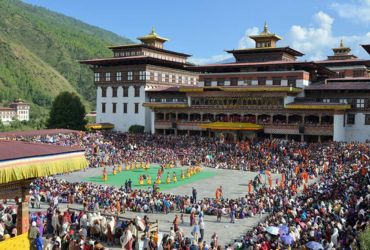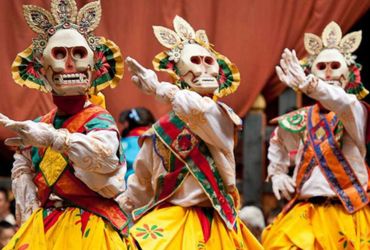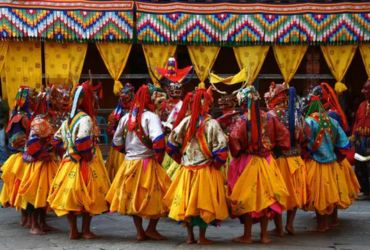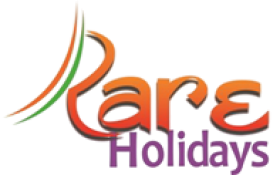Festivals
Bhutanese people live under the mantra of simplicity and high thinking. Bhutan is an otherworldly experience, as a country that provides a statistical value to its happiness (Gross National Happiness) and is pleasantly isolated from Western influence. Its mountaintop monasteries, bustling local life, festivals, and abundant biodiversity make it one of the most sought-after locations for the adventurous tourist.
The most vivid moment in Bhutan is during a celebration, also known as 'tshechu'. The majority of the events take place in monasteries, where masked dancers and local musicians perform in front of rapt audiences. Travelling to Bhutan during these events is likely to give a new depth to your journey. Many Bhutanese festivals are spiritual, remembering the country's famous Buddhist teachings. Monasteries and surrounding villages are the ideal sites to see the full extent of the devotion that people still feel. The Black Necked Crane Festival, which takes place in November at the Gangtey Gonpa in Phobjikha, is the most distinctive.

Paro Tshechu
The city of Paro hosts Bhutan's second largest festival. The Cham mask dancing tradition is the climax of the festival. The festivities stretched to the streets, where local markets were set up. The last day of the five-day festival is the most significant, when the Thongdrel, a massive scroll artwork, is unfurled in front of thousands.

Thimphu Tshechu
Attending one of the country's largest festivals, this three-day monastic extravaganza is a traveler's dream come true. It starts on the tenth day of the eighth month of the lunar calendar. The celebration includes prayers and ceremonies to invoke the gods. The masked dances that take place during this time period are the festival's centrepiece.

Punakha Tshechu
The Punakha Tshechu began in 2005, in the western section of Bhutan. The annual event is meant to maintain Buddhist teachings and keep Zhabdrung Rimpoche's heroic actions alive in the thoughts of his followers. Traditional dances, food stalls, and markets liven up the mood.

Jambay Lhakhang Drup
Jambay Lhakhang is one of Bhutan's oldest temples. Songtsen Gampo, a Tibetan king, founded it in the seventh century AD. Jambay Lhakhang is located in Bumthang, on the way to Kurjie Lhakhang. There is an annual celebration on the calendar here, with the highlight being the fire ritual held in the evening. Massive crowds converge to watch the ceremonial naked dance. The festival runs for five days.

Trongsa Tshechu
Trongsa, located in central Bhutan, was previously the seat of power for the central and eastern areas. Today, it is noted for hosting one of the country's largest festivals. The three-day annual Tshechu event draws together people from all walks of life. In addition to traditional mask dances, guests can watch the unfurling of the sacred Thongdrol and receive monastic blessings. People also receive blessings from the sacred Nangtens, which are opened on the final day of the Tshechu.
Join Newsletter
To receive our best deals


